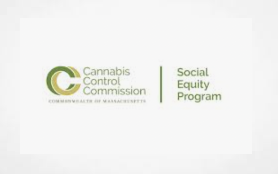For more than 2,000 years, cannabis has been used to relieve persistent pain. Up until the 1920s, it was lawful in the US; however, tougher controls started to take hold, and by the middle of the 1930s, all 50 states had explicitly banned the use of the herb. The public’s perception of marijuana has seen a significant shift in recent years, and a number of states have already legalized marijuana for medical and, in some cases, recreational use. More states are swiftly adjusting their attitudes about this potent organic substance. The CBD sector has prospered during the past ten years. Products made from cannabis are widely available. Furthermore, as marijuana legalization spreads across the United States, a bright future is also in view.
Labeling has become crucially necessary as a result of the proliferation of businesses supporting marijuana’s legalization, including manufacturers, dispensaries, and large-scale producers, to mention a few. There are many different CBD products available, including tinctures, extracts, cbd olie, and edibles. The existing legal system may leave producers baffled as to how to appropriately name, package, and label their goods. Indica and sativa, two distinct cannabis strains, should be labeled to allow customers know what they’re buying. Weed strain labels in the shape of stickers are a fun, easy way to keep track of your products without mucking them up.
Different weed products
Did you believe that hemp and marijuana came from distinct plants? They don’t. There are numerous names for cannabis and marijuana as well as hemp, weed, pot, ganja, dope, 420, and cheeba. These terms—whether they’re hippie, popular, or scientific—all refer to the same plant: the miraculous cannabis. You can give it whatever name you like. However, you must conduct thorough research before planning your labels and your custom weed bags.
Unlike supplements and pharmaceuticals, cannabidiol (CBD) products are governed by a different set of rules by the Food and Drug Administration (FDA). Because of this, some businesses profit from it and use “hemp” and “CBD” interchangeably on their labels. However, there are a lot of contrasts between the two. If you want to connect with both current and potential cannabis customers, it’s crucial to use the right terminology and give accurate information about the goods.
Why Labels Are Important
When you visit a dispensary or compassion center, you’ll generally see products with labeling that resemble those on packaged groceries. These products have been laboratory tested.
Labels on cannabis products provide a wealth of information. They can let you know if the item you are picking up has mold on it or not. They’ll inform you if any leftover pesticide traces were discovered on the strain. Additionally, they’ll let you know how much THC, CBD, and other cannabinoids are actually usable.
You could argue that comprehending these weed strain labels reveals far more about the high the strain offers than just its indica/sativa classification. For instance, even if two strains are assumed to be the same, one with 3% CBD content and the other with 0% will have different effects.
Decoding Cannabis Labels
There are distinct labeling rules in each state. This indicates that the types of information that ought to be on cannabis labels do not have a national standard. Additionally, some states do not mandate strict testing for medical cannabis products. In these circumstances, you essentially have no notion if what the package or budtender tells you is true or not. This will not only offer you a sense of what to anticipate from the product, but it will also enable you to steer clear of tainted buds. To identify testing facilities in your area, you may need to conduct some research. Labs often publish testing data online. However, labeling can be a little perplexing even with easily available testing information.
General Label Information
A few straightforward details on labels are largely self-explanatory. But for the sake of information, here are what they are:
- Strain name
- Who grew the strain
- The indica/sativa class
- The date the strain was tested
- Testing lab name and information
- The expiration date of the testing results (this is NOT the expiration date of the cannabis product)
- Information on legal compliance with state law
Product Description and Branding through weed strain labels
Making exceptional and appropriate weed strain labels and packaging for your cannabis items may not be a piece of cake. After all, we’re discussing a contentious market with nuanced marketing guidelines. But being honest and establishing a strong foundation for your brand are worth the work.
So, in addition to including all necessary information and making it apparent on the box, be sure to provide something extra. Make your product description stand out as being from a trustworthy business that appreciates honesty and its clients.
Conclusion
Regular marijuana consumers are already familiar with the different marijuana products available in stores, online, and dispensaries. Some people have even chosen a favorite brand and consistently use it. There are also newcomers, though. They could know the kind of goods they want, but they have no notion of what it is called. They will initially review a variety of sources and product descriptions to better understand and prepare themselves for a purchase. And this is where your labor of love will pay off in increased sales and devoted patrons. Educate potential customers on the types of things you are selling with enticing titles and informative descriptions on custom weed bags. Your pot labels are an effective marketing tool!

















